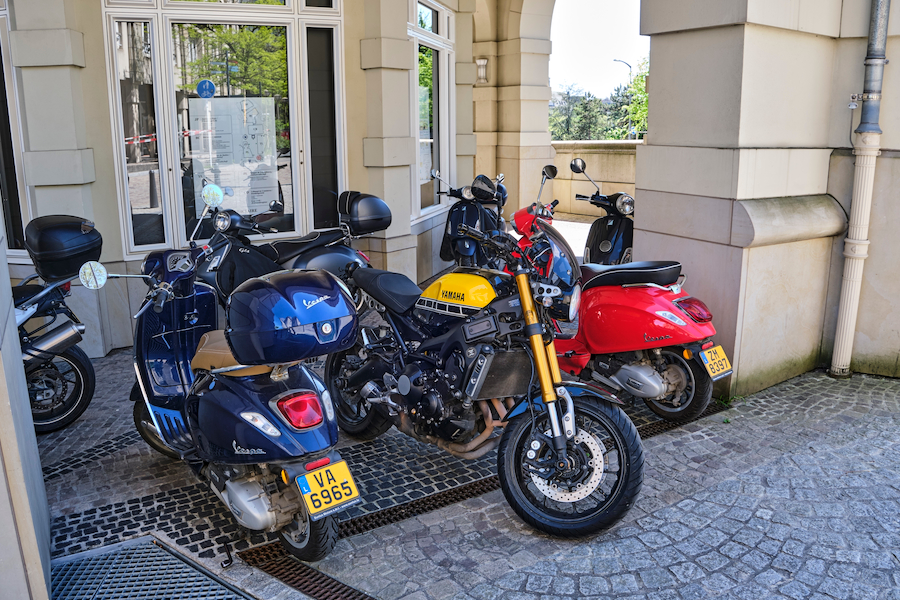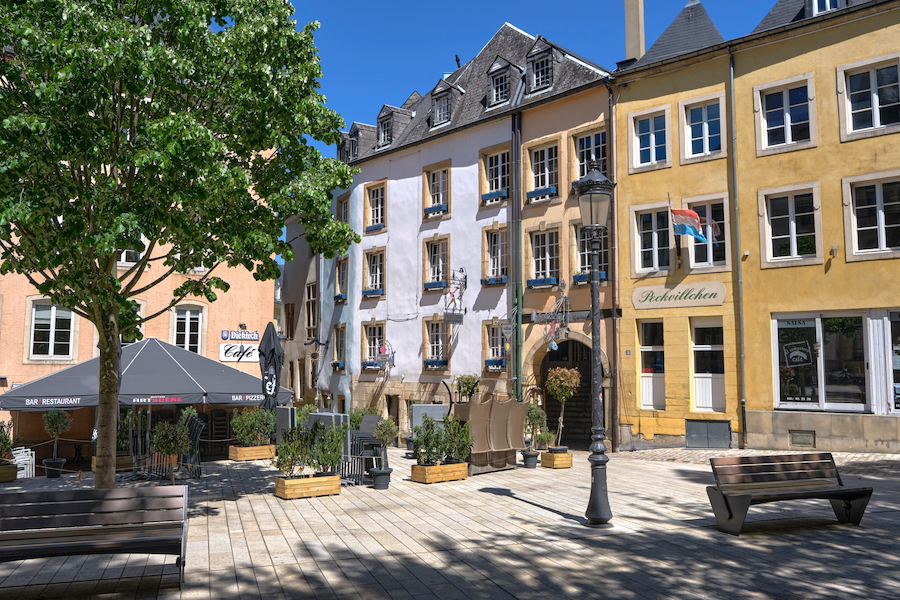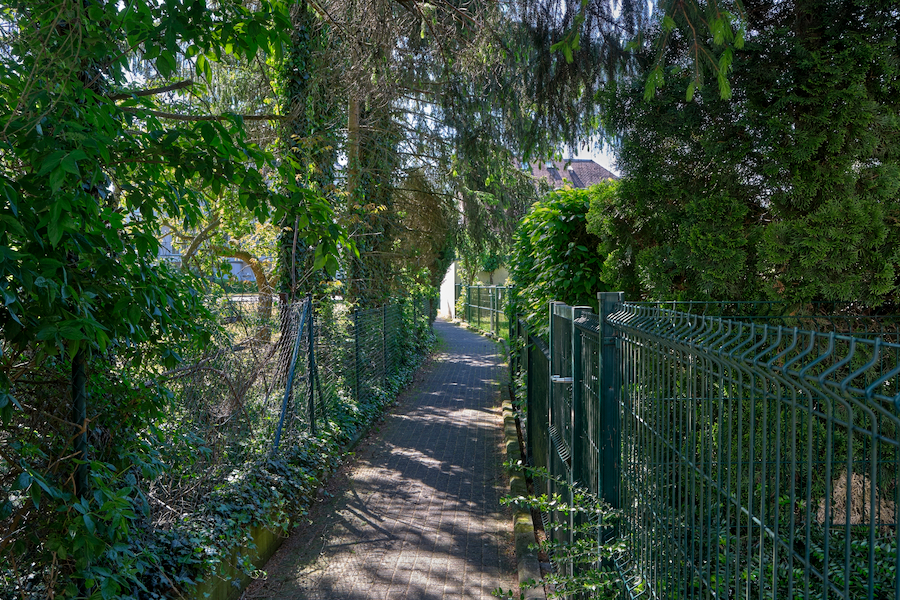Mobile Flagship Phone Cameras 2021 H1 Review: Megapixels & Telephotos
by Andrei Frumusanu on June 21, 2021 9:30 AM ESTDaylight: Main Camera HDR
We talked a lot about the optics and the different auxiliary sensors on the various phones, but kept the comments limited in regards to the main sensor as well as the general image processing characteristics of the various phones, so let’s go dive in a little more depth in that regard. In general, most of the phones’ main camera sensors should be quite competent nowadays as it’s the one module that usually doesn’t get to suffer from design compromises. Nevertheless, there are clearly some phones which offer quite superior hardware, such as the Mi 11 Ultra’s relatively giant 1/1.12” sensor – with the compromise here coming in the device’s huge camera bump instead.
Image processing is also extremely important even on such large sensors; while some phones have larger pixels, it’s still nowhere near large enough for the sensors to have a sufficient pixel full well capacity to enable the natural dynamic range information extraction in well lit scenarios while still maintaining detailed highlights as well as shadows. Most sensors still only have 10-bit ADCs and we’re only now seeing some newer 12-bit models, while almost all dedicated cameras out there 14-bit is the standard and new sensor generations in the coming years now feature 16-bit depth. The solution to this is to use multi-frame HDR processing, where the phone cameras will capture multiple successive images and merge them together to get to a higher dynamic range image. This year, we’ve seen the introduction of staggered HDR sensors which help out enabling this feature in a faster manner with less movement ghosting, the HM3 sensor on the S21 Ultra or the GN2 on the Mi 11 Ultra feature this new advancement.

[ X-T30 ( ) ]
[ S21U(S) ] [ S21U(E) ] [ Mi 11 Ultra ] [ Axon 30 Ultra ]
[ OnePlus 9 Pro ] [ Mi 11 ] [ S21(E) ] [ iPhone 12 Pro ] [ Pixel 5 ]
Starting off with this bike scene, it’s pretty obvious what the intended subject is meant to be, however the metering of most smartphones will still want to balance out the extremely bright highlight in the background sky, which in turn means the HDR processing will have a harder time in trying to recover shadows in the foreground even though it’s not a dark scene at all, which is in general why the look on the phones is quite different than what I captured on the X-T30 – the colour temperature was also quite off on all the phones.
The S21 Ultras pictures is a good example of the metering, the Exynos preferred to go brighter with the HDR and retain a bit more detail in the background highlight, while the Snapdragon preferred to go for more detailed shadows on the main subject. In terms of details, it seems this scene went the opposite of what we saw until now, and it’s the Snapdragon which employs a visible structure enhancement throughout the scene, giving it a bit more of an artificial look. The regular S21 doesn’t look very different to the S21 Ultra at all – if anything I prefer the S21’s slightly better colours, and I do see some improved shadow detail.
The Mi 11 Ultra excels in dynamic range here, showcasing much better shadows whilst also having more highlights maintained in the background compared to the S21 Ultra. The detail structure is also more natural without any heavy processing. The regular Mi 11 on the other hand looks completely washed out in comparison, with very little detail retention, as if the phone was primarily capturing using the ultra-wide and sensor fusing some details from the wide-angle – I’m a bit perplexed by the result.
While the OnePlus 9 Pro image appears eye-catching, it’s not a technically great result as the shadows are forced towards black. I actually remember when OnePlus introduced this image processing with a firmware update on the OnePlus 7 Pro following the devices’ releases, based on user feedback, with the company trying to mimic the “contrasty” Pixel look. That Pixel look was actually a negative side-effect of the HDR processing incapable of dealing with shadows, which was fixed and resolved with the latest HDR+ algorithm on the Pixel 5. OnePlus devices today are still left with what I consider a self-induced handicap.
The Axon 30 Ultra is a bit flat in the foreground highlights, producing a generally dark picture. The iPhone is also having surprising trouble with the metering here, as the Pixel 5 does quite a bit better.

[ X-T30 ( ) ]
[ S21U(S) ] [ S21U(E) ] [ Mi 11 Ultra ]
[ Axon 30 Ultra ] [ OnePlus 9 Pro ] [ Mi 11 ]
[ S21(E) ] [ iPhone 12 Pro ] [ Pixel 5 ]
In this landscape, the Mi 11 Ultra and the Pixel 5 did best in terms of colours. The S21’s did well in the overall representative brightness of the scene, however I feel like they didn’t have the dynamic range in the highlights to give out natural graduations, and thus it feels a bit flat. The Axon 30 Ultra feels it like has over-sharpening going on, and also while the overall brightness is correct it struggles to graduate the highlights correctly.
The over-processing on the OnePlus 9 Pro is quite horrible and makes a huge mess of the colour tones as well as details of the scene.

[ X-T30 ( ) ]
[ S21U(S) ] [ S21U(E) ][ Mi 11 Ultra ]
[ Axon 30 Ultra ] [ OnePlus 9 Pro ] [ Mi 11 ]
[ S21(E) ] [ iPhone 12 Pro ] [ Pixel 5 ]
In general colour tones and balance, the Pixel 5 has I think the best results, closest to being accurate, generally followed by the iPhone 12 Pro. The iPhone is generally the only one being able properly pick up the highlight textures, while the Pixel 5 is the only one being able to pick up extreme shadow detail.
The S21’s again had very good overall scene exposure, however lack detail retention in the highlights, probably going too far beyond what the sensors were capable. The Xiaomi phones are both generally good but their HDR processing really isn’t as strong in recovering information here. The Axon 30 Ultra does well except for what I would consider a bit too warm colour. The OnePlus 9 Pro struggles with highlight textures, and again has this extreme digital look due to structure enhancing.

[ X-T30 ( ) ]
[ S21U(S) ] [ S21U(E) ] [ Mi 11 Ultra ]
[ Axon 30 Ultra ] [ OnePlus 9 Pro ] [ Mi 11 ]
[ S21(E) ] [ iPhone 12 Pro ] [ Pixel 5 ]
This was also more an artificial scene to see what the HDR algorithms would do on the various phones. The Pixel 5 is again generally the best in terms of correctly maintaining colours in the extremes. The usual problem is that when you have highlights nearing dynamic range saturation and clipping, they should be desaturating their colours towards white, which some phones camera algorithms just don’t do as they attempt to recover details. This ends up in a very unnatural looking images where colours can go haywire.
Overall Main Camera HDR Processing & Natural Dynamic Range
In general, when it comes to the algorithms that are able to behave the best in terms of demanding high dynamic range scenarios, Google’s Pixel 5 and Apple’s iPhone 12 Pro appear to behave the best in terms of handling the tone curves correctly. The Samsung phones also have good HDR but sometimes don’t handle their highlights as well, going beyond what their sensors are capable of handling.
Xiaomi’s HDR processing doesn’t appear to be the strongest in recovering dynamic range, however the giant Mi 11 Ultra sensor still does well in terms of raw natural dynamic range, and also natural detail retention. OnePlus’s 9 Pro I found to be lacking in colour accuracy of highlights a lot, but most importantly I found the excessive sharpening and structure enhancement to be very detrimental to the images. The Axon 30 Ultra had quite good HDR in terms of returning the dynamic range, but also lots of times struggled with getting the colours tone mapped correctly.
I’d be curious to see what Google and Apple would be capable of given an actually technically competent image sensor, as most of the other vendors are really hit & miss in regards to their image processing in demanding lighting conditions.










60 Comments
View All Comments
s.yu - Friday, June 25, 2021 - link
Bottom line, the "people" factor in photos actually translates to skin tones, and in that respect all phones should be fine since it's just a matter of color and the most easily repairable even from JPG output, so it's unlikely, with the exception of 1+'s artificial black crush, that skin tones would be mapped beyond the visible DR with all this automatic HDR.There's also the matter of accurately portraying skin tones, or automatically "enhancing" them making them subjectively more flattering, which is kind of beside the point of Anandtech reviews, which largely focuses on objective measurements and realism of the processing.
ottonis - Wednesday, June 23, 2021 - link
For a state of the art review of phonecameras, this article is the reference in 2021.Incredible amount of work has been put into this meticulous comparison, and it shows.
Hats off to Andrei and Anandtech and a big thank you for the great and truly useful work.
s.yu - Wednesday, June 23, 2021 - link
Wow you've outdone yourself (and of course everybody else) Andrei! Next time you could add diffraction to the equation :)What I learned from this article is that Xiaomi now has a surprisingly robust night mode, and that Samsung finally gets the hang of properly utilizing that 108MP main, such that it generally matches the Mi11U.
The darkest scene shows blotchy(in squares, or checkered) noise from the Fuji, which is new to me. It seems as though not even Fuji's own JPG algorithm could perfectly handle X-trans. You could try Fuji's own conversion software though, people who are serious about using Fuji can't go without it.
I sometimes get the Exynos blurriness from my Gcam too, and some of the Pixel samples also seem to show that behavior(like the whole thing's out of focus, or the lens is decentered). I initially thought it was bad compatibility with my hardware but it looks like an inherent software issue now. It's not consistent, at least on Gcam, I could take multiple shots when the issue arises and would generally get a keeper.
Minor addition though Mi11U's night mode switch seems entirely useless, not only does it automatically do night mode in auto, it automatically reverts to auto in night mode, the first night sample shows two nearly identical 1x shots from Mi11U, and examining the texture I believe they're from auto.
Andrei Frumusanu - Thursday, June 24, 2021 - link
> The darkest scene shows blotchy(in squares, or checkered) noise from the Fuji, which is new to me. It seems as though not even Fuji's own JPG algorithmThese are RAWs, not SOOC JPEGs, so the blotchiness would some of the CO noise reduction.
s.yu - Thursday, June 24, 2021 - link
Oh! I thought you used OOCJPG for reference too. That's really weird because avoiding artifacts that exhibit a regular pattern (especially one that hints at x-trans specificity) should've been Fuji's top priority. It's a glaring issue. I thought the reference samples looked a bit too...refined, to be OOCJPG though.Lilja - Wednesday, June 23, 2021 - link
I'm again a bit disappointed that there's no comparisons of the RAW photos that these cameras produce :/ottonis - Thursday, June 24, 2021 - link
I think you would most probably be disappointed because I don't think that all the HDR(+), night-mode and other multi-exposure tricks are actually baked into a single raw file. Instead, the software algorithms merge several RAW files into one final piece of output, and this generally a JPEG file.So, testing RAW files would certainly be a great test of the hardware -/sensor-performance but would barely do justice to the computational side of things. And we all know that the success of phonecameras actually relies more on their software algorithms than on sensor size.
s.yu - Thursday, June 24, 2021 - link
Testing RAW the Pixel should win hands down, though it introduces another level of variation because Gcam results greatly vary from the metering, while the metering is not subject to manual control, and is not entirely predictable, and there's absolutely no telling what comes out until the file is saved and both ends of the DR examined with sliders in LR.s.yu - Thursday, June 24, 2021 - link
I want to clarify that metering for a lower luminance level, and metering higher but manually pulling down the slider on the right till the screen apparently shows the same exposure, do not yield the same results, the former will increase the likelihood of blown out highlights but provide cleaner shadows, while the latter will retain more highlights but sacrifice shadows. One can only attempt to strike a balance somewhere in the middle, but not have both by, for example, enlarging the shutter speed gap between long and short exposures in the stacking sequence.Rοb - Thursday, June 24, 2021 - link
It great to see a thorough comparison that has some disagreement with DXOMark: https://www.dxomark.com/rankings/#smartphones-mobi...Where the dust usually settles is after a few updates of the Firmware squeeze the last bit of performance out of the hardware - on that front a couple of manufacturers do better than some others.
I'm happy that my _old_ phone from a few years ago works well, and that in a couple of more years (hopefully my phone lives so long) we'll have new phones that significantly improve on these.
Nothing like the convenience of a great camera in the compact size of a phone, now only if telephoto, HDR, and stabilization could be improved with computational photography to rival DSLRs of yesterday.